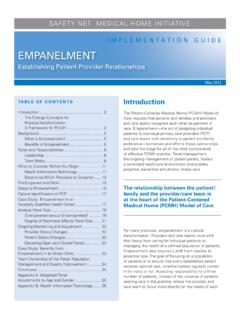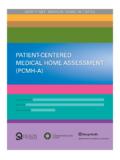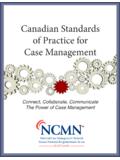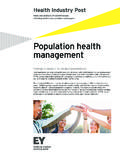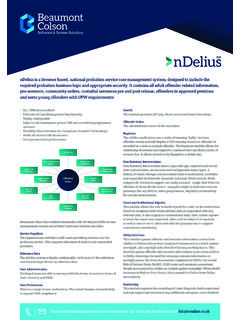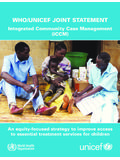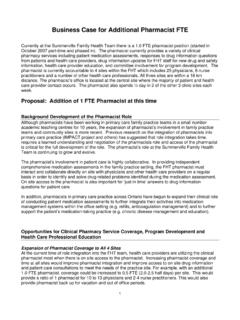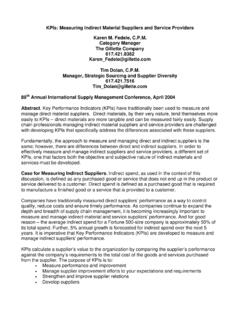Transcription of Closing the Loop with Referral Management
1 Speaker: Linda Thomas-Hemak, MD, President and CEO, The Wright Center for Graduate Medical Education Moderator: Ed Wagner, MD, MPH, The MacColl Center for Health Care Innovation Closing the Loop with Referral Management Change Concepts for Practice Transformation Ed Wagner, MD, MPH, MACP MacColl Center for Health Care Innovation Group Health Research Institute Linda Thomas-Hemak, MD The Wright Center for Primary Care February 26, 2013 Care coordination The goal is to track and support patients when they obtain services outside the practice, and to ensure safe and timely referrals or transitions.
2 4 Care coordination 5 patients with community resources to facilitate referrals and respond to social service needs. Link behavioral health and specialty care into care delivery through co-location or Referral arrangements. Integrate patients when they obtain services outside the practice. Track & support with patients within a few days of an emergency room visit or hospital discharge. Follow up test results and care plans to patients & families. Communicate care Management services for high-risk patients. Provide Care fragmentation Provider Referral networks have become larger and depersonalized.
3 Obtaining specialty support is still a major problem for safety net providers. 6 Valuable social/support services are often underutilized. Studies demonstrate that critical patient information for referrals and transitions are often missing, which distresses patients and is unhelpful (or worse) for providers. Effects of care fragmentation 37% Primary care providers (PCPs) reporting that they always get information back after a Referral : 17-20% PCPs routinely notified about discharges: 3-23% PCP involved in discussion before discharge: 20-40% Discharge summaries received by PCP within 2 weeks: 65% Discharge summaries without info on pending tests: 21% Discharge summaries without discharge medications: 14% Discharge summaries without follow-up plans: 7 Kripilani, et al.
4 JAMA 2007. Bell, et al. JGIM 2008. Care coordination Care coordination is the deliberate integration of patient care activities between two or more participants involved in a patient s care to facilitate the appropriate delivery of health care services. It refers to activities and interventions that attempt to reduce fragmentation and improve the quality of referrals and transitions. 8 McDonald, et al. Closing the Quality Gap, Vol. 7. AHRQ, 2007. NCQA must-pass element (PCMH 5B): Referral tracking and follow up Use the PCMH-A to help pass the must-pass items.
5 To pass these items your PCMH-A scores should be: at least level B on items 24-26. The practice coordinates referrals by: Providing reason for Referral and relevant clinical information. Tracking Referral status. Following up to obtain specialist s report. Documenting agreements with specialists for co- Management . Providing electronic exchange of patient information. 9 Care Coordination Model 10 How to improve care coordination 11 1. Assume accountability 2. Provide patient support 3. Build relationships & agreements 4. Develop connectivity The Wright Center for Primary Care Mid-Valley Practice Archbald, PA Academic, Level 3 NCQA, Safety Net Medical Home All Providers EMR MU Certified Staffing: 5 Physicians: 4 FTE 1 FT/1PT Med Peds 1 FT Internal Medicine 1 FT Pediatrician 1 PT Family Medicine 1 NP, 3 PAs 1 RN Care Manager 1 Social Worker 3 LPNs 8 MAs 3 Receptionists 1 Referral /Scheduler 1 EMR Application Specialist Presented by Dr.
6 Linda Thomas-Hemak, MD What we changed and why Care Coordination: Closing the loop through Referral tracking is one of the greatest benefits we provide as patient advocates. Uncoordinated, reactive care Causes patient and provider frustration & anxiety Diminishes health outcomes Redundant & reactive work Strategic Referral tracking Care utilization & compliance are enhanced Barriers to care are identified & mitigated Patients appreciate the organized effort! vs. How we implemented changes Leadership: Physician and Management Consensus Engaged understanding and intentional MU of EMR Software Functionality Building an Accountable and Leaner Medical Home and Medical Village 14 Intentional MU of EHR software functionality One process and language for REAL Meaningful Use Noting preferred provider, indication, and risk stratified, color coded time expectations Engaging data Management : Close only with attached outcomes For example.
7 A colonoscopy order remains open until procedural notes/biopsies are done Specialty specific Referral attachments Collectively working our open referrals exception report 15 Creating referrals All providers engage the patient and create specific service provider electronic referrals during a point of care, phone or portal based patient encounter Special focus of Referral is noted by provider in notes section All referrals are sent to central, accountable Referral queen Any referrals generated at POC appear in the CVS Specialty visits driven by patients drive Referral creation Building a leaner Medical Home & Village Collective Office Accountability Assigning an accountable Referral Queen Open referrals status report and run chart Emphasizing shared accountability for clean up Building our office capacity with work redistribution Specialty-specific and destination-driven Referral attachments Redistributing scheduling work to specialty offices Hunting for missing outcomes and
8 High-volume offenders Preferentially promoting our Good Neighbors Identifying and Mitigating Barriers to Care Enhancing utilization to avoid acute problems Reducing duplicative work 17 One language to risk stratify time expectations Color coded EMR visual Management system Red= Urgent or Emergent Urgent = 1 week * Emergent = 24 hours Verbal contact made by provider with scheduler Priority = 2 weeks White = Routine or Elective Routine = 8 weeks * Elective before next visit * Turn around time documented in Referral # Space visible in open Referral report Data managing Referral outcomes Referral requests include our EMR Inbound Fax # All documents faxed appear directly in EMR holding tank Specialty visit notes faxed are attached to open or created referrals Procedural results are proactively separated as specific testing orders, not specialty service referrals.
9 Ex: a colonoscopy order is opened so GI Referral may be closed. This order remains open until procedural notes/biopsies are secured to close orders Data managing Referral outcomes Data manager s role: Monitors inbound fax s holding tank on a daily basis Results received are attached to the original Referral form which is closed and then results are routed to the provider for review Procedural orders may be opened by data Management dept if noted in the specialty note Procedural results close open orders unless biopsies are noted and then orders remain open until final pathology received Providers review all results and close the documents after being addressed Scheduling referrals & specialty defined information Engaging our good neighbor offices
10 To define mutual expectations Destination driven data. Proactively sending the information desired/needed: Patient demographics and insurance Focus of requested service Progress notes Medications Lists/Allergies Relevant imaging and lab studies Referrals sent via Fax directly from the EMR by the Central Referral Scheduler Tracking: open Referral status and exception report Status report checked on a daily basis by our Referral queen to ensure no open emergent referrals Open Referral exception report run on a weekly basis The report looks at all open referrals The list is divided into the following two categories.
